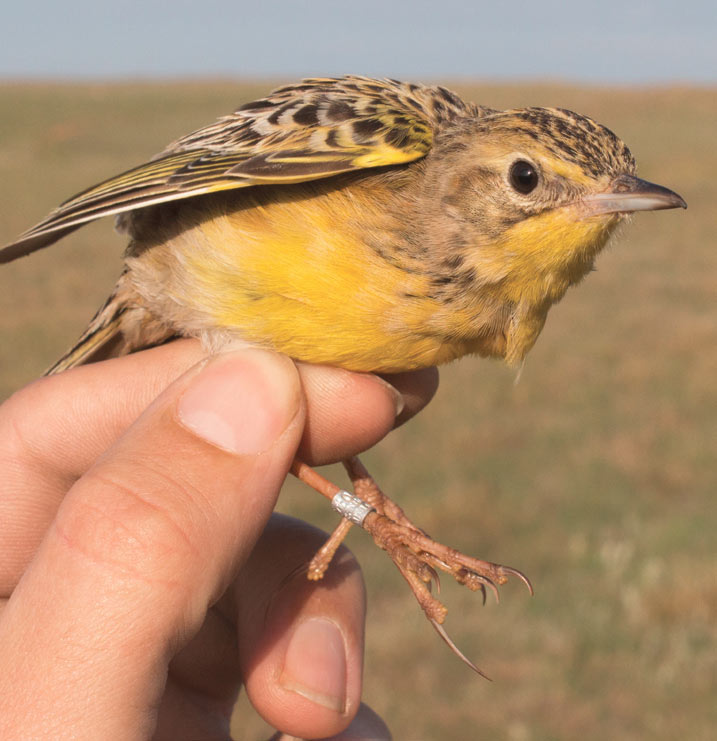 Yellow-breasted pipit displaying its bright plumage
Yellow-breasted pipit displaying its bright plumage
Yellow-breasted pipits are one of a handful of vertebrate species that are endemic to the Moist Highland Grasslands of southern Africa. Anecdotal evidence suggests that the population has steadily decreased, with apparent local extinctions in some regions and massive reductions in population size where they used to be plentiful. Yet the causes of these reductions remain largely unknown.
Darren Pietersen, studying towards his doctoral degree in the Faculty of Veterinary Science, with Professor Andrew McKechnie in the Department of Zoology and the Percy FitzPatrick Institute of African Ornithology, Professor Raymond Jansen from the Tshwane University of Technology and Dr Ian Little of the Endangered Wildlife Trust, are examining the habitat requirements of this species in order to better understand what drives their distribution. Although previous studies have investigated the habitat requirements of this species at a local scale, the collaborative research will extend the study across the species’ entire range. Furthermore, the researchers are investigating what biological factors may be driving this distribution by making use of environmental niche models to predict and interpret the species’ current distribution, while also undertaking a phylogenetic study of all sub-Saharan African pipits and longclaws (both members of the family Motacillidae). The latter will allow them to determine how yellow-breasted pipits are related to these two groups, as well as determine whether their taxonomic position might explain why they are such habitat specialists.
During their summer breeding season, when both sexes have diagnostic bright yellow plumage, they are restricted to Moist Highland Grasslands along the Eastern Escarpment of South Africa, marginally entering eastern Lesotho. In winter both sexes lose their bright colouration, becoming rather nondescript, dull brown birds that are difficult to identify. As a result, their non-breeding range is poorly known, although the available evidence suggests that at least some individuals remain on the summer breeding grounds while others drop off either side of the escarpment and can be found as far afield as Suikerbosrand Nature Reserve near Johannesburg.
It is clear that in several areas their habitat is threatened by factors that include open-cast coal mining, conversion of grasslands to crop agriculture, afforestation, human settlements and unfavourable land management. Like many other Moist Highland Grassland endemics, yellow-breasted pipits are extremely sensitive to unfavourable land management practices, such as fire regimes that are either too frequent or infrequent, or over- and under-grazing. This study will document in detail what drives their distribution patterns.